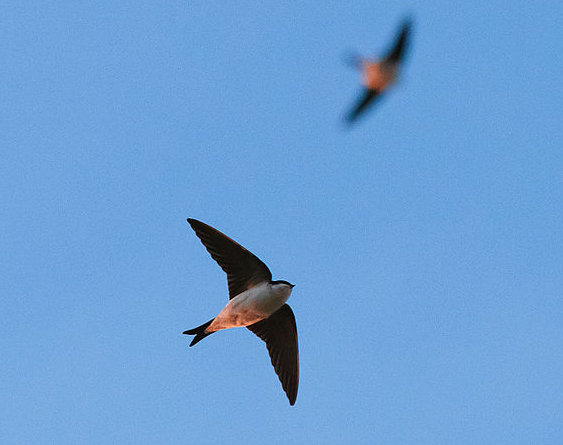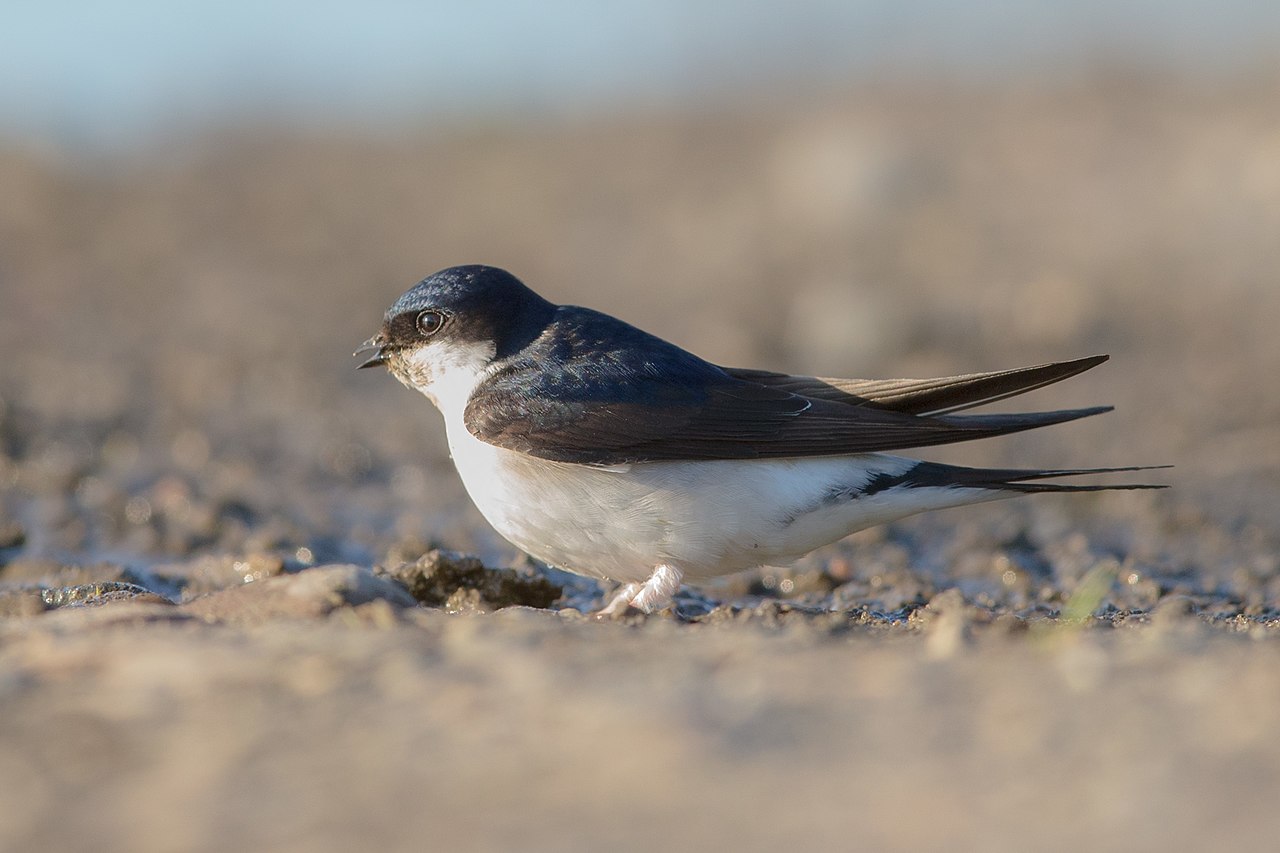Garden Wildlife
Garden Wildlife


House martin Delichon urbicum
A diminutive swallow that is closely associated with humans and their buildings. They are in severe decline but are recorded from about 5% of gardens.


What do they eat?
Small flying insects, mainly flies and aphids. They forage lower than other high-fliers and are often seen flying over gardens close to where they nest.
Where do they breed?
House martins – as their name suggests, have taken readily to using buildings as places to nest, usually communally in small groups. They favour sites under eaves, where they build a cup-shaped nest of mud. House martin nest boxes are available, made of woodcrete or terracotta, set on brackets so they can be screwed into the wall. They breed from May to September, with two broods in the year, with up to 5 eggs.
What do they do?
They behave much like swallows, but with a more fluttering flight. They are often seen and photographed on the ground collecting mud from ponds or puddles. They over-winter in Africa, arriving in April and leaving by October.
How are they doing?
House martin numbers declined fast between 1980 and 1990, and have continued to fall more slowly, so the population is now only about 25% of 1980s levels, with an estimated 480,000 pairs and their conservation status is now Red.
Finding out more:
BTO profile on house martin
RSPB profile on house martin
House martin Conservation UK and Ireland
Page written and compiled by Steve Head
What do they look like?
They are smaller than swallows at 12cm length, with generally similar colouring of black back and white under-parts. However, they have no red forehead and throat, but instead have a prominent white rump. Their wings are shorter and broader than those of swallows and swifts, with a relatively short forked tail.
What do they sound like?
Their song is similar to a swallow’s, but a bit weaker. Their call is a “tchrip” and they have a sharp “tseep” alarm call.
Call Alarm call
Agris Celmins, XC692005. Accessible at www.xeno-canto.org/692005.
Albert Lastukhin, XC676030. Accessible at www.xeno-canto.org/676030.
House martin Delichon urbicum
A diminutive swallow that is closely associated with humans and their buildings. They are in severe decline but are recorded from about 5% of gardens.
House martin Delichon urbicum
A diminutive swallow that is closely associated with humans and their buildings. They are in severe decline but are recorded from about 5% of gardens.
House martin Delichon urbicum
A diminutive swallow that is closely associated with humans and their buildings. They are in severe decline but are recorded from about 5% of gardens.
What do they look like?
They are smaller than swallows at 12cm length, with generally similar colouring of black back and white under-parts. However, they have no red forehead and throat, but instead have a prominent white rump. Their wings are shorter and broader than those of swallows and swifts, with a relatively short forked tail.
What do they sound like?
Their song is similar to a swallow’s, but a bit weaker. Their call is a “tchrip” and they have a sharp “tseep” alarm call.
Call Alarm call
What do they eat?
Small flying insects, mainly flies and aphids. They forage lower than other high-fliers and are often seen flying over gardens close to where they nest.
Where do they breed?
House martins – as their name suggests, have taken readily to using buildings as places to nest, usually communally in small groups. They favour sites under eaves, where they build a cup-shaped nest of mud. House martin nest boxes are available, made of woodcrete or terracotta, set on brackets so they can be screwed into the wall. They breed from May to September, with two broods in the year, with up to 5 eggs.
What do they do?
They behave much like swallows, but with a more fluttering flight. They are often seen and photographed on the ground collecting mud from ponds or puddles. They over-winter in Africa, arriving in April and leaving by October.
How are they doing?
House martin numbers declined fast between 1980 and 1990, and have continued to fall more slowly, so the population is now only about 25% of 1980s levels, with an estimated 480,000 pairs and their conservation status is now Red.
Finding out more:
Page written and compiled by Steve Head
























